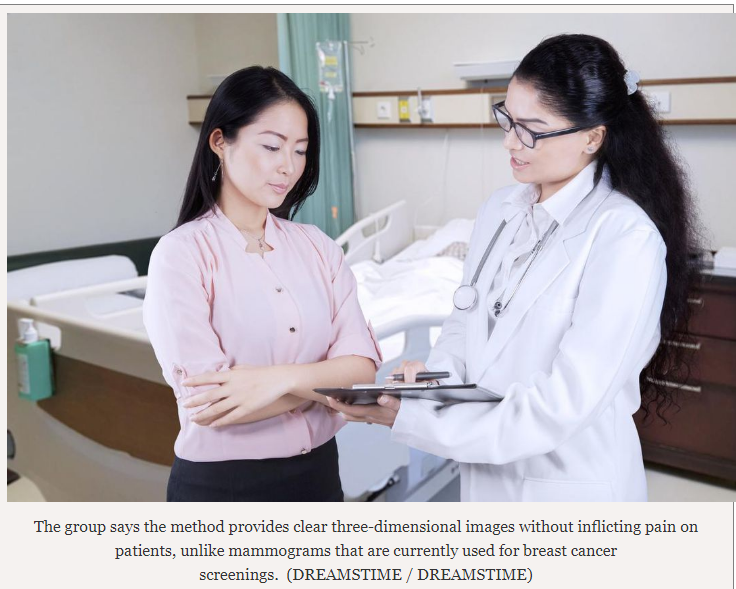Researchers in Japan have developed a new way to detect breast cancer
The method provides clear three-dimensional images without inflicting pain on patients, unlike mammograms that are currently used for breast cancer screenings, according to the group. The group aims to start clinical trials in fiscal 2019 in a bid to spread the new technique in screenings. Kobe University professor Kenjiro Kimura, a specialist in metrology, and other researchers looked at the fact that breasts are mostly made of fat, with radio waves deflecting body tissue but penetrating fat.The group established the method of instantly creating a stereoscopic image of cancerous tumours by transmitting radio waves to a breast and analyzing the waves that were deflected off tumours.
Kobe University professor Kenjiro Kimura, a specialist in metrology, and other researchers looked at the fact that breasts are mostly made of fat, with radio waves deflecting body tissue but penetrating fat.The group established the method of instantly creating a stereoscopic image of cancerous tumours by transmitting radio waves to a breast and analyzing the waves that were deflected off tumours.
In mammograms, patients often feel pain because their breasts are compressed between plates. Moreover, in the case of women with dense breast tissue, the overall image is whitish, making it difficult to detect abnormal areas, which also appear as white.
The new method is painless and capable of clearly detecting tumours. It is also free from radiation exposure, and the radio wave energy involved is no more than 0.1 per cent of the radio waves transmitted from mobile phones.The group looked into the accuracy of the new method by testing about 200 people, including cancer patients with dense breast tissue. The results matched with over 90 per cent of the results of other types of examinations such as mammograms, ultrasonographic scans and biopsies. The group was also able to detect early-stage cancer, which is difficult to detect using standard methods.
“I hope to commercialize this method through medical equipment by around 2021 by getting co-operation from major manufacturers,” Kimura said.
Mitsuhiro Tozaki, head of the radiology department of Sagara Hospital’s Breast Centre in Kagoshima, said: “Women with dense breast tissue account for about 80 per cent of all women, so it is vital to develop an examination method to replace mammograms. The method may be applied to other medical uses such as examining the effectiveness of drug treatments.”
source -Japantimes
